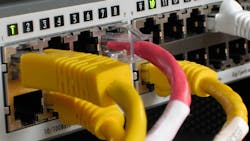What Matters Most When Choosing an Ethernet PHY (Download)
As digitalization progresses further in nearly all aspects of our daily lives, ever greater volumes of data need to be exchanged constantly between different devices and machines. Especially in industry, conventional communications technologies are running up against their limits, and Ethernet, or in this case industrial Ethernet, is emerging as the new standard. With it, very high data rates in the gigabit range can be achieved over distances of up to 100 m, or even several kilometers when using fiber-optic cables.
Ethernet is an interface specification set forth in IEEE 802.3. One of the elements of IEEE 802.3 is the Ethernet physical layer (PHY). It’s a transceiver component for transmitting and receiving data or Ethernet frames. In the OSI model, Ethernet covers Layer 1 (physical layer) and part of Layer 2 (data-link layer).
